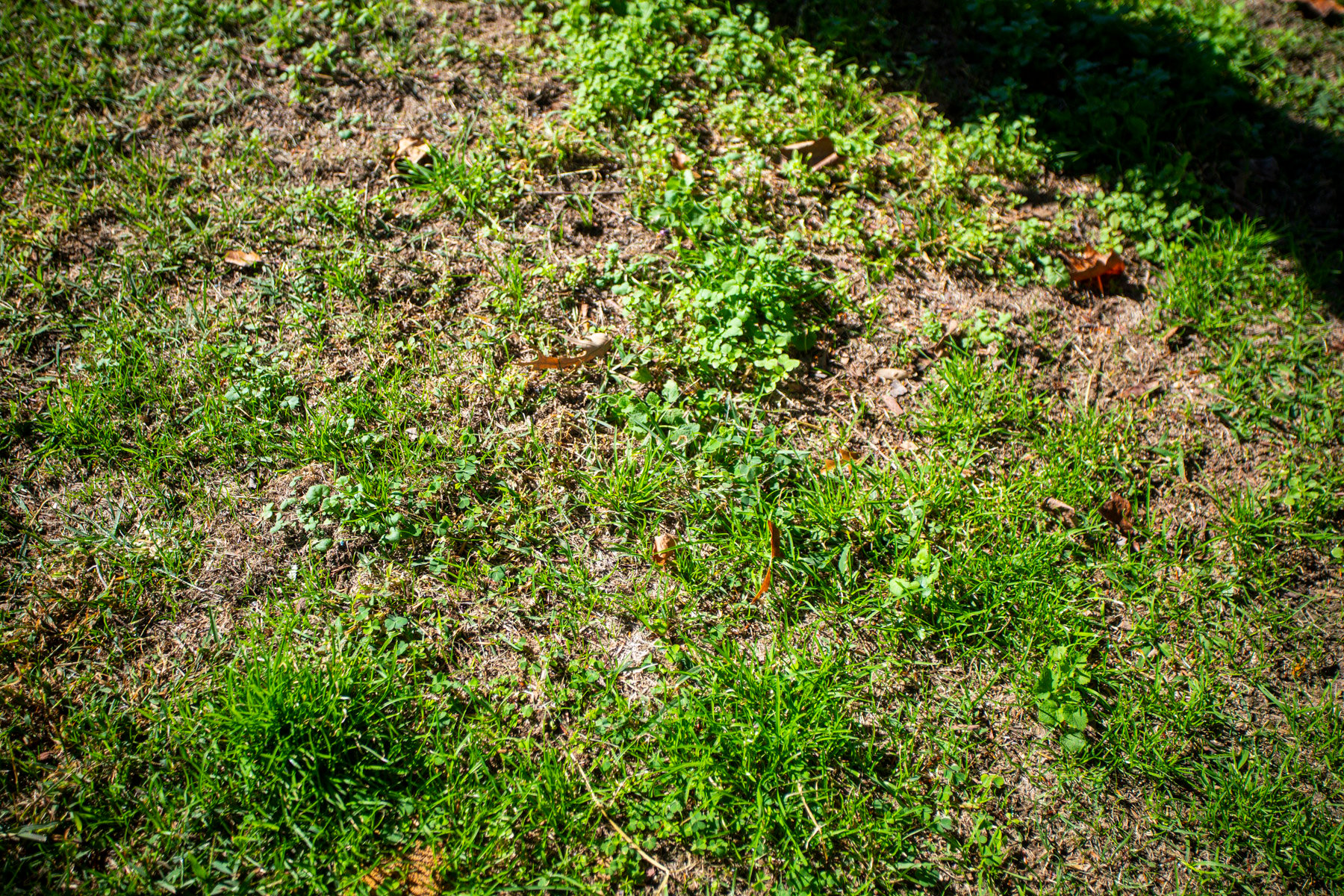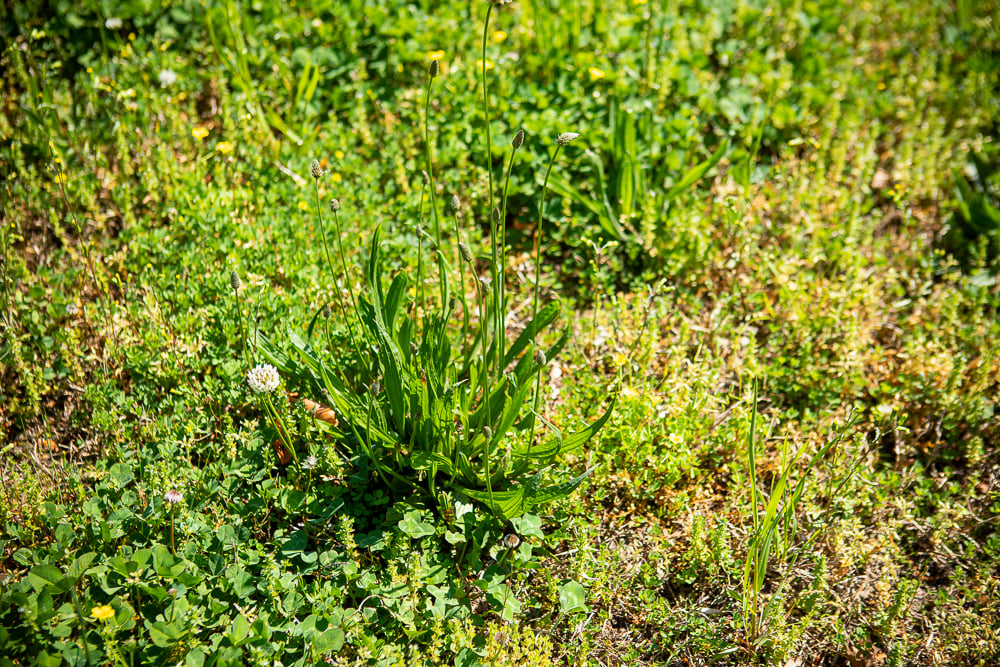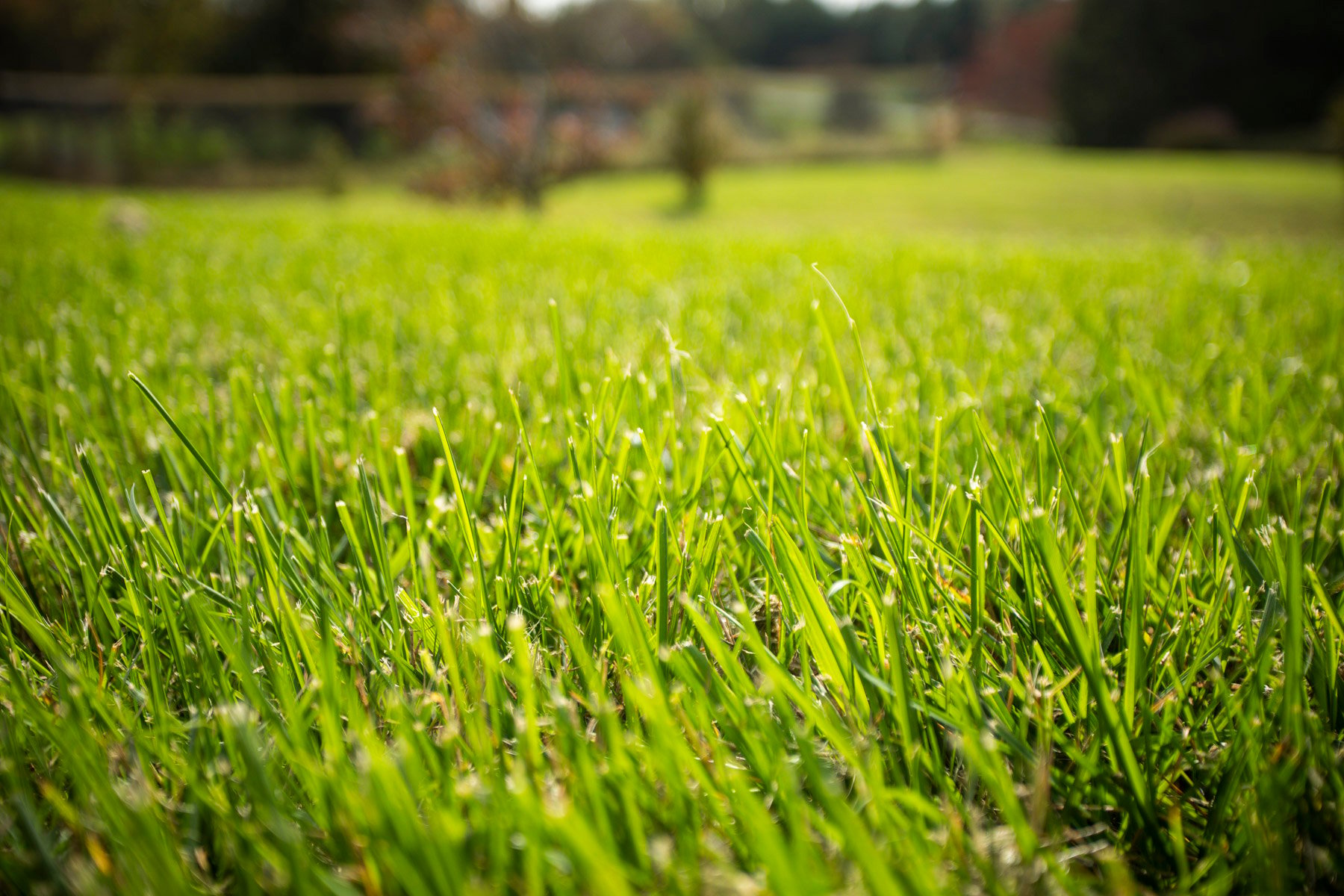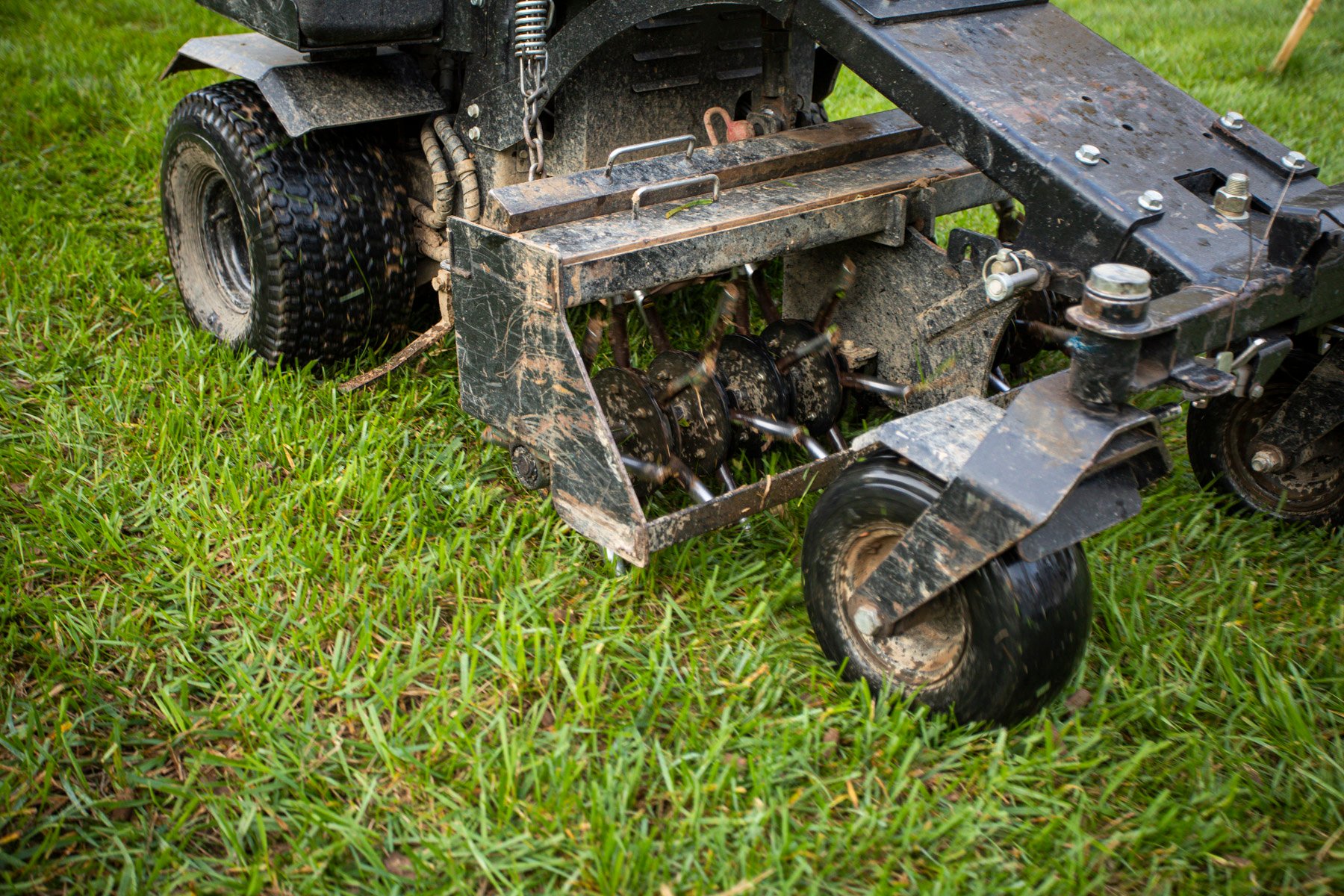A thick and healthy lawn is what you crave.
We understand that. It’s what we all want. A nice, green oasis to come home to, sink our bare toes into, and enjoy.
But, unfortunately, there are times when you might notice your grass isn’t behaving as nicely as you’d like.
Instead of a grand expanse of grass that looks uniform and lush, you might notice thick patches of grass, clumps, or bare spots throughout your yard.
What happened to your magnificent lawn?  Let’s dive into what causes this and how you can identify these issues and remedy them to get your even, thick, green grass back.
Let’s dive into what causes this and how you can identify these issues and remedy them to get your even, thick, green grass back.
What Causes Thick Patches of Grass?
There’s nothing worse than a patchy, clumpy lawn. My goodness, what will the neighbors think?
Your yard is an eyesore with these bits and tufts all about in varying shades of green and mixed textures. You likely want to throw your hands up in the air and yell, “Why is my grass growing in clumps?”
Well there are 4 reasons that you might see these bare areas and grass patches. And there are some solutions that go along with them you can follow to get your grass growing right again.
#1. You Aren’t Watering Enough in Extreme Drought & Heat
Not enough water is the biggest absolute cause of summer stress in a lawn.
In normal conditions, watering two to three times per week as much as an hour at a time in the early morning hours -- between 3 a.m. and 6 a.m. -- is best. You’re striving to reach 1.5 inches of water per week.  However, in extreme conditions like some of these July weeks where temperatures are 90 degrees Farenheit all week with 100-degree heat index, we recommend watering an extra day -- three to four times per week.
However, in extreme conditions like some of these July weeks where temperatures are 90 degrees Farenheit all week with 100-degree heat index, we recommend watering an extra day -- three to four times per week.
The reason watering is so important is because this extreme heat and drought can stress a lawn. When a lawn is stressed, it naturally things and that’s what creates bare areas and clumps.
The thicker your lawn, the better it can withstand stress. That’s why consistently aerating and overseeding annually is so important. It thickens the lawn and helps it become more resistant to this stress.
#2. Grassy Weed Takeover
In the heat of summer, when stress can naturally take over a lawn, bunch-type grassy weeds can sneak into bare spots, taking full advantage of the opening and rooting their clumpy selves into your lawn. Crabgrass is one such weed. It’s a lighter green eyesore that looks like grass growing in clumps and coarse patches. And it likes to spread quickly.
Crabgrass is one such weed. It’s a lighter green eyesore that looks like grass growing in clumps and coarse patches. And it likes to spread quickly.
Postemergent weed control during the summer months can help eliminate these grassy weed menaces. But you’ll want to follow that up with aeration and overseeding to ensure those bare spots left behind fill in with desirable grasses versus more weeds again later.
#3. Mowing Too Short
We get it. Sometimes the grass seems to grow so fast during the summer that you want to save yourself some time. So you mow that grass really short. This means you won’t have to get back out there again, right? And you like that short look because it makes it appear nice and thick and compact -- like a golf green.
Unfortunately, while your theory sounds good, it’s actually untrue. First of all, grass will continue to grow during these prime growing months. So even if you think you’re saving yourself another trip out with the mower, you’re actually not. Sorry to break that one to you.
Second, when you cut your grass too short, you’re actually stressing it out. This means you’re enabling additional thick patches of grass and other things like weeds or diseases to get in. This doesn’t put your lawn in a great position to combat the lumpy, bumpy look. Keeping a higher mowing height -- we’re talking about 4 inches high -- during these stressful heat- and drought-ridden summer months is actually better for your lawn. It’ll enable it to grow thicker. And it’ll be protected from stressors, to boot.
Keeping a higher mowing height -- we’re talking about 4 inches high -- during these stressful heat- and drought-ridden summer months is actually better for your lawn. It’ll enable it to grow thicker. And it’ll be protected from stressors, to boot.
Mow a little higher. Trust us. You’ll be happy with the results.
#4. Lawn Insects and Diseases
If your lawn gets invaded by insects like grubs or diseases like brown patch, you could be left with bare spots or rough areas.
These are areas created by stress from those insects and diseases. And things like patchy weeds will want to grow in those open spaces, creating those thick patches of grass you’re trying to avoid.
Dealing with the insect or disease problem with insecticides or fungicides can help eliminate the problem. Then, following that up with aeration and overseeding can repair those bare spots and prevent the lumps and bumps.
Tackle Thick Patches of Grass Head On
Even the most well-kept lawn can have a few blemishes from time to time. But these random patches of thick grass can cause blotches that you’re not willing to ignore.
If you take anything from the education we provided above, remember this above all else: Maryland lawns truly need aeration and overseeding regularly to keep that nice, lush, green, thick appearance. It’s just one of those lawn care practices that really benefits lawns growing in this transitional area environment that we live in. As you see with many of the cases above, it can help alleviate stresses on the lawn, eliminating bare spots.
We hope we’ve helped you identify what might be causing grass growing in clumps in your Central and Southern Maryland yard.
If you’re still seeing the lumps and the bumps and you’re scratching your head in confusion, give Natural Green Systems a call. We’re experts when it comes to the nuances of caring for Maryland lawns, and we’d be happy to get your grass back to its thick, green appearance again.
Let’s boost your lawn’s health and eliminate those bare spots together! Natural Green Systems has all the grass-growing knowledge you need. Get started today with a free quote. Together, we’ll customize a plan that gives your lawn the facelift it needs.




